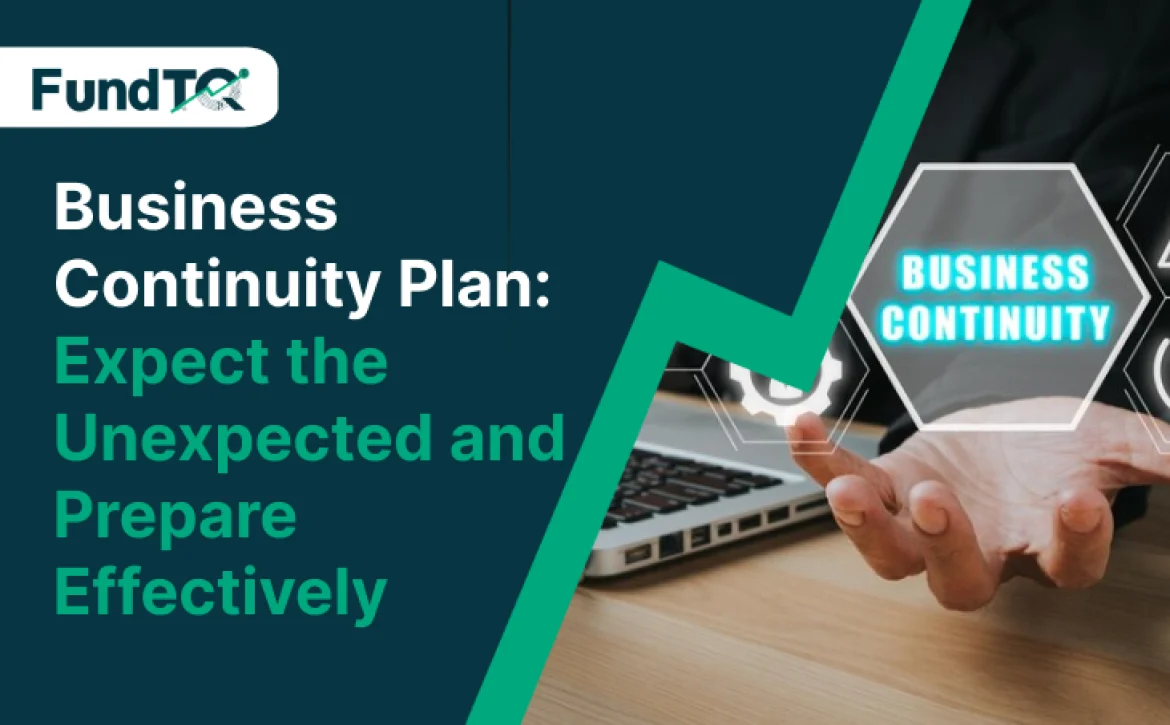Business Continuity Plan: Expect the Unexpected and Prepare Effectively
In managing and growing their companies, seasoned entrepreneurs prepare for unforeseen circumstances. Operations disruptions could cost your firm a lot of money or cause serious losses. But when issues emerge, business owners and entrepreneurs who create a business continuity plan (BCP) can be ahead of the game.
Discover the definition, potential uses, and operation of business continuity plans (BCPs) in our overview.
What’s a Business Continuity Plan?
Any company may have disruptions in its operations. Occasionally, a calamity strikes without warning and does more damage than anticipated to corporate operations. Being ready for these interruptions can help you reduce risks and protect yourself from unfavorable circumstances.
A business continuity plan (BCP) is a collection of procedures and actions that are typically documented in a document and serve to maintain stability in the event of operational disruptions. In the event of an unanticipated disruption, this paper assists in proactively solidifying systems and procedures to keep things operating.
Companies should write business continuity plans to encompass a wide variety of unexpected occurrences. These may include:
- Natural disasters
- Power outages
- Public health emergencies
- Civil unrest
- Cyberattacks
- Supply chain issues
- Reputational damage
- Acts of terror
How to Create a Business Continuity Plan?
Plans for business continuity might vary greatly from firm to company. Business continuity plans should, however, generally include explicit policies, recovery plans, and backup plans for promptly resuming regular business operations and restoring vital business functions.
Key steps to creating your plan:
1. Assess And Identify Vulnerabilities.
Assemble your teams to produce an analysis of the business impact. The analysis ought to encompass potentially catastrophic disruptions and their potential effects on finances and operations. Think about discussing:
– Essential business operations a summary of the essential company functions that must continue in the case of an unforeseen interruption.
– Potential dangers to essential company operations a list of the most plausible dangers unique to the company. Potential hazards can be found with the aid of a risk assessment and business impact analysis.
2. Create And Prepare Your Plan.
Enterprises must concentrate on their recovery procedures, reaction, correspondence, and the duties and responsibilities of team members carrying out strategies. BCPs ought to contain:
– Accountable parties: a personnel and team roster called the continuity team, which is in charge of carrying out the business continuity strategy.
– Strategies for preventing and regaining business disruptions: The strategies and procedures for resuming vital business operations are described in these policies’ particular operational and backup plans.
– Key personnel, emergency personnel, suppliers, etc. can be reached at: a directory of people to contact on the business continuity team for assistance in implementing backup plans and resuming operations.
3. Test And Train.
Once your plan has been created, test it and train continuity teams. If staff members haven’t rehearsed carrying out the strategy, even a carefully designed one may not succeed. You ought to:
Describe the procedures used to test business continuity plans a summary of the steps involved in ensuring that a company’s emergency or disaster plans will function as intended.
4. Update Your Plan.
These policies can and ought to be “living, breathing” documents that are routinely examined and revised as necessary. Make sure a plan is in place for routinely testing, evaluating, and reevaluating plans.
Depending on the type of business, a continuity plan’s actual contents will change. In order to determine the biggest and most likely threats to their operations and to choose the best course for business recovery, businesses frequently conduct risk assessments and business impact analyses.
Business Continuity Plans vs. Disaster Recovery Plans
“People frequently discuss business continuity and disaster recovery planning together. The two ideas complement one other. Even though the terms are occasionally used synonymously, it’s crucial to understand their distinctions.
Here are some key differences between the plans:
1. Business Continuity Plans
- Plans that are specific and proactive about how a company will respond in the event of a disaster or other unforeseen business interruption.
- Address a variety of situations, both little and large.
- These programs may concentrate more on holistic prevention and preparation.
2. Disaster Recovery Plans
- Outline procedures in advance for reacting to emergencies.
- Record a company’s response to a significant incident so that it may resume safe, regular operations.
- Discusses information technology, data security, and strategies for recovering data access and backup data in the event of a disaster.
Why are Business Continuity Plans Important?
Plans for business continuity play a crucial role in an organization’s entire risk-management approach. They serve as the cornerstone for a company’s strategy for emergency management and disaster preparedness in all situations. Building your company’s resilience in the face of future unpredictability starts with a business continuity plan, or BCP.
If a firm doesn’t have a solid business continuity plan—and related paperwork, such a catastrophe response plan—it can find itself in a precarious situation when an unforeseen incident occurs. Plans for business continuity are in place to assist mitigate both short- and long-term risks and to offer a route back to stability.
Supplement business continuity plans with other risk-management documents, like succession plans, to ensure comprehensive proactive protection. Businesses can reduce risk more successfully the more ways they can support their operations in the case of an emergency or disaster. In fact, in the event of a disaster, doing so can assist safeguard your company’s revenue.

